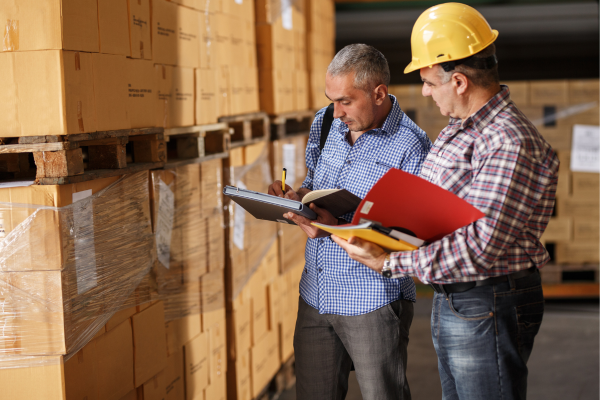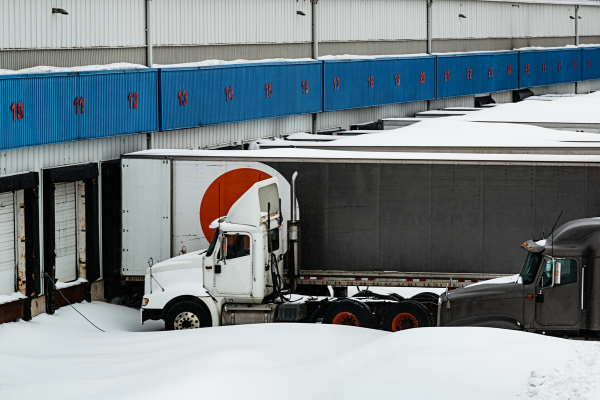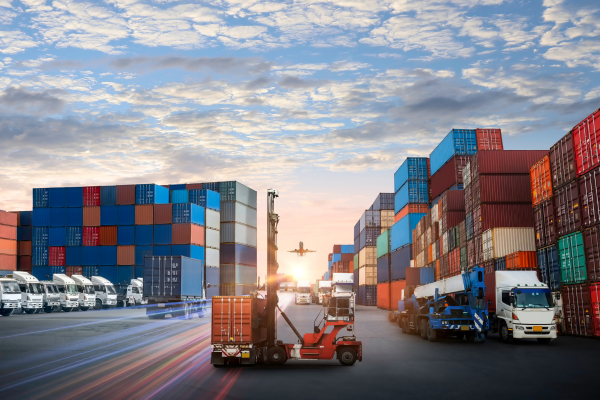Customs clearance represents one of the most critical—and often most frustrating—stages in transpacific shipping. Even minor documentation errors or compliance oversights can result in costly delays, unexpected storage fees, and disrupted supply chains. For ecommerce sellers and importers relying on timely inventory replenishment, these delays directly impact revenue and customer satisfaction. This comprehensive guide outlines the essential steps to streamline your customs clearance process and minimize regulatory holdups in your freight management strategy.
Step 1: Determine Accurate Product Classification
Why it matters: Incorrect Harmonized System (HS) codes are among the most common causes of customs delays and can result in incorrect duty assessments, compliance holds, and potential penalties.
Action items:
- Consult the Harmonized Tariff Schedule to identify the precise 10-digit HS code for each product
- For complex or ambiguous products, consider obtaining a binding ruling from customs authorities
- Document your classification logic for consistent application across all shipments
- Review classifications annually as tariff schedules are frequently updated
Optimization tip: Maintain a comprehensive database of your product classifications, including supporting rationale and any relevant binding rulings. This documentation proves invaluable during customs audits and helps ensure consistent classification across multiple shipments.
Step 2: Verify Country of Origin Requirements
Why it matters: Incorrect or unsubstantiated country of origin claims can trigger intensive customs examinations and potentially lead to significant penalties under trade enforcement programs.
Action items:
- Document the complete manufacturing process to substantiate origin claims
- Obtain manufacturer’s affidavits or certificates for products with components from multiple countries
- Understand substantial transformation rules that determine final origin
- For products benefiting from free trade agreements, ensure they meet specific origin criteria
- Implement a supplier certification program to verify origin claims
Optimization tip: Regular supplier audits and comprehensive documentation of manufacturing processes not only support customs compliance but also provide valuable supply chain transparency that can enhance freight management optimization efforts.
Step 3: Prepare Comprehensive Commercial Documentation
Why it matters: Customs authorities rely heavily on commercial documentation to assess duties and verify compliance. Incomplete or inconsistent documentation immediately flags shipments for secondary review.
Action items:
- Ensure commercial invoices include:
- Detailed product descriptions (avoid abbreviations and jargon)
- Quantities with precise units of measure
- Per-unit and total values in transaction currency
- Complete buyer and seller information
- Country of origin for each line item
- Incoterms clearly specified
- Prepare packing lists with carton-specific contents and measurements
- Include purchase orders and contracts if referenced on invoices
- Maintain consistency across all documents (e.g., quantities, descriptions)
Optimization tip: Develop standardized templates for commercial documentation that prompt for all required information and implement automated cross-document verification to catch discrepancies before filing.
Step 4: Research Import Restrictions and Requirements
Why it matters: Many products require special permits, licenses, or certifications that, if not obtained in advance, can result in denied entry or extended customs holds.
Action items:
- Identify any product-specific import restrictions (common for food, medical supplies, electronics)
- Determine which government agencies regulate your products beyond customs (FDA, FCC, CPSC, etc.)
- Obtain required permits, registrations, or certifications before shipping
- Prepare product test reports or compliance certificates
- Verify labeling requirements for your specific products
Optimization tip: Create a regulatory requirements matrix for your product portfolio that identifies all agencies with jurisdiction and their specific documentation requirements. Update this matrix quarterly to capture regulatory changes.
Step 5: Calculate Duties and Taxes Accurately
Why it matters: Incorrect duty calculations or failure to account for special trade programs can result in overpayment or, worse, underpayment that triggers customs investigations.
Action items:
- Determine applicable duty rates based on current tariff schedules
- Research potential duty exemption or reduction programs
- Assess applicability of trade remedies (antidumping, countervailing duties)
- Calculate merchandise processing fees and harbor maintenance fees
- Account for any section 301 tariffs or special duties
- Consider duty drawback opportunities if applicable
Optimization tip: Regular analysis of your duty expenditures often reveals opportunities for significant savings through trade preference programs, foreign trade zones, or strategic product modifications that can substantially improve your bottom line.
Step 6: Select the Appropriate Customs Bond
Why it matters: All imports require a customs bond, and selecting the wrong type or insufficient coverage can delay clearance or result in customs rejecting your entry entirely.
Action items:
- Determine whether a single transaction or continuous bond is more cost-effective
- Calculate required bond coverage based on anticipated duty liability
- Ensure your customs broker has current bond information on file
- Verify bond sufficiency for high-value or irregular shipments
- Monitor bond utilization to prevent reaching capacity limits
Optimization tip: For regular importers, continuous bonds typically offer both cost savings and operational efficiency by eliminating the need to arrange individual bonds for each shipment, streamlining your freight management process.
Step 7: Engage Reliable Customs Brokerage Services
Why it matters: A knowledgeable customs broker serves as your advocate with customs authorities and can navigate complex regulations more efficiently than most importers can independently.
Action items:
- Select brokers with specific experience in your product categories
- Provide a comprehensive customs broker instruction packet
- Establish clear communication protocols with your broker
- Authorize your broker to make entry on your behalf
- Review broker performance regularly against clearance metrics
Optimization tip: Consider a broker with offices at multiple ports of entry to maintain clearance consistency even when shipping contingencies require port diversions, enhancing your freight management flexibility.
Step 8: Implement Pre-Clearance Procedures
Why it matters: Pre-clearance allows customs processing to begin before goods arrive, potentially eliminating wait time at the port and accelerating delivery to your customers.
Action items:
- Submit documentation to your broker 3-5 days before vessel arrival
- Consider applying for programs like Remote Location Filing (RLF)
- Use Automated Broker Interface (ABI) or Automated Manifest System (AMS) for electronic documentation submission
- Verify ISF (10+2) filing compliance for ocean shipments
Optimization tip: The combination of trusted trader status and electronic pre-filing can reduce customs clearance times by up to 70%, significantly accelerating your inventory availability and reducing overall transportation lead times.
Step 9: Plan for Customs Examinations
Why it matters: Random or targeted examinations are inevitable in international shipping. Having a strategy to manage them efficiently minimizes their impact on your supply chain.
Action items:
- Budget for occasional examination costs in your landed cost calculations
- Establish relationships with examination facilities at key ports
- Prepare standard operating procedures for responding to examination requests
- Maintain readily accessible technical product information for customs questions
- Consider customs clearance timing when promising delivery dates to customers
Optimization tip: Analysis of past examinations often reveals patterns that can help predict and mitigate future inspection risks, allowing for more precise inventory planning and customer commitments.
Step 10: Conduct Post-Entry Verification and Management
Why it matters: Customs compliance doesn’t end with shipment delivery. Post-entry processes protect you from future penalties and help refine your compliance program.
Action items:
- Reconcile actual versus declared values and quantities
- Verify final duty assessments match pre-entry calculations
- Address any customs notices or requests promptly
- Maintain all import records for the statutory five-year period
- Conduct regular internal audits of your import compliance program
- Implement corrective actions when discrepancies are identified
Optimization tip: A systematic post-entry review process not only ensures compliance but often identifies significant duty recovery opportunities through post-summary corrections or drawback claims, directly improving your bottom line.
Bringing It All Together: The Revenue Impact of Streamlined Customs Clearance
The financial benefits of optimized customs clearance extend far beyond avoiding penalties. Businesses that implement these best practices typically experience:
- 2-4 day reduction in average transit times through streamlined clearance[1]
- 15-30% decrease in customs-related demurrage and detention charges[2]
- Significant working capital improvements through predictable inventory flows[3]
- Enhanced customer satisfaction through reliable delivery promises[4]
- Competitive advantage through faster time-to-market for seasonal or trend-driven products[5]
For ecommerce sellers in particular, smooth customs clearance translates directly to improved product availability, reduced stockouts, and ultimately, higher revenue. By incorporating these customs optimization strategies into your broader freight management approach, you transform what many see as an administrative burden into a strategic advantage that directly impacts your bottom line.
Need expert guidance getting customs clearance?
Our freight management optimization specialists can develop a customized customs clearance protocol tailored to your unique supply chain requirements. Contact us today to learn how we can help you minimize customs delays and maximize the efficiency of your transpacific shipping operations.
References:
[1] Journal of Commerce, “Impact of Pre-Filing on Customs Clearance Times,” 2023. [2] Drewry Supply Chain Advisors, “Demurrage Cost Analysis for Trans-Pacific Trade,” 2024. [3] McKinsey & Company, “Working Capital Optimization in Global Supply Chains,” 2023. [4] Forrester Research, “Customer Experience Index: Logistics and Delivery,” 2024. [5] MIT Center for Transportation & Logistics, “Time-to-Market Advantages in Consumer Goods,” 2023.





